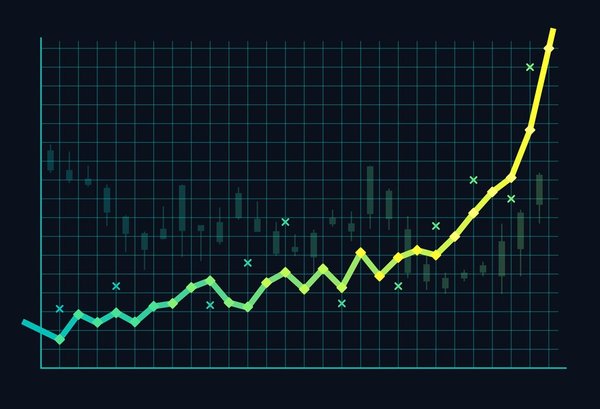Anxious to start investing during a bull market where stock prices seem to hit all-time highs every other day?
If so, you may be tempted to try market timing, a strategy in which investors attempt to predict the future movements of stock prices so they can buy low and sell high. However, while the concept sounds appealing and intuitive, it's important to understand the risks and challenges involved.

Overview
Understanding market timing
Market timing is essentially trying to play a game of financial "hot potato" with the stock market. The gist is that you try to buy stocks when you think they're cheap and sell them when they're expensive, all based on your predictions of where the market will go next. It can involve closely watching economic indicators, market trends, news events, and even social media sentiment to guess the best times to make your moves.
For example, imagine you've been keeping an eye on tech stocks and notice they often dip slightly after certain types of economic reports. Thinking you can capitalize on this pattern, you decide to sell your shares right before an upcoming inflation report that you suspect might spook the market. Luckily enough, the price drops after the report, and you buy the stocks back at a lower price, hoping to sell them for a profit as they recover.
This is a classic example of market timing -- making investment decisions based on anticipated market movements and trying to outsmart the typical buy-and-hold strategy.
Risks
The perils of market timing
Market timing might sound like a savvy strategy to maximize your investment returns, but in reality, it often proves to be a risky and inefficient approach for most investors.
Vanguard, a well-respected and large investment firm, has conducted extensive research that highlights the difficulties and pitfalls associated with market timing. Their study revealed that the best and worst trading days frequently occur close to each other.
This means that significant downturns during bull markets can suddenly follow high peaks, and conversely, surprising spikes can occur during bear markets. This unpredictability makes it exceedingly challenging for even seasoned investors to time their trades accurately and consistently benefit from such volatility.
Further complicating matters, Vanguard's research indicates that most investors tend to make the wrong decisions when attempting to time the market. Specifically, they found that investors who react to market downturns by panic-selling and shifting their assets to cash often suffer in the long run.
These investors typically miss out on significant market recoveries that follow downturns, which can severely affect their long-term investment growth.
"The only problem with market timing is getting the timing right."Peter Lynch
What to do instead
What to do instead of market timing
Understanding why market timing is a mistake should lead you to consider more reliable, long-term investment strategies. If you're wary of market volatility and high valuations but want to avoid the pitfalls of trying to time the market, there are several strategies you can adopt to minimize risk and maximize your investment potential.
Dollar-cost averaging
One effective approach is dollar-cost averaging, particularly with diversified investments like an S&P 500 index fund. This method involves investing a fixed amount of money into a particular investment at regular intervals, regardless of the share price.
For example, you might invest $500 into an S&P 500 index fund every month. When prices are high, your $500 buys fewer shares. When prices are low, the same amount buys more shares. Over time, this can help reduce the impact of volatility on the overall purchase price of the shares, as it smooths out the average cost per share.
Diversify internationally
Another strategy is to diversify your portfolio internationally. While U.S. stocks might be experiencing a bull market, other countries' markets may not be, and they might even offer better valuations.
Maintain a long-term perspective
Finally, maintaining a long-term perspective is crucial. If your portfolio is diversified, it's important to trust in the overall upward trajectory of the market over many years.
Market dips and swings can be unsettling in the short term, but markets have tended to grow over the long term. Keeping a broad, long-term view can help you sleep well at night.
Related investing topics
Example
A real-life example of market timing
Charles Schwab (SCHW -2.63%), another well-known asset manager, conducted a study to compare the effectiveness of market timing vs. a consistent buy-and-hold investment strategy.
Their research used five hypothetical investors to illustrate different approaches:
- Peter Perfect was a flawless market timer, investing $2,000 annually at each year's lowest closing point of the S&P 500 for 20 straight years.
- Ashley Action took a straightforward, consistent approach, investing her $2,000 on the first trading day of every year.
- Matthew Monthly employed dollar-cost averaging, dividing his annual $2,000 into 12 equal parts and investing them at the beginning of each month.
- Rosie Rotten consistently had terrible timing, always investing her $2,000 at the market's annual peak.
- Larry Linger kept his money in cash equivalents like Treasury bills, always waiting for a better time to invest in the market.
As expected, Peter Perfect came out on top due to his uncanny ability to time the market perfectly. However, the surprising result was how well Ashley and Matthew did with far less effort. They consistently invested and used dollar-cost averaging, respectively, and achieved returns almost as high as Peter's.
Even Rosie, despite her poor timing, ended up not too far behind due to her consistent investment actions.
Larry, on the other hand, fared the worst. His strategy of waiting for a lower market to invest never really paid off, and he missed out on significant growth opportunities.
The key takeaway from this study is that while you may aspire to be like Peter Perfect, it's more likely you'll end up like Larry Linger if you attempt to time the market. In contrast, consistently investing like Ashley and Rosie or employing a dollar-cost averaging strategy like Matthew can yield effective results without relying on luck or perfect timing.





















































